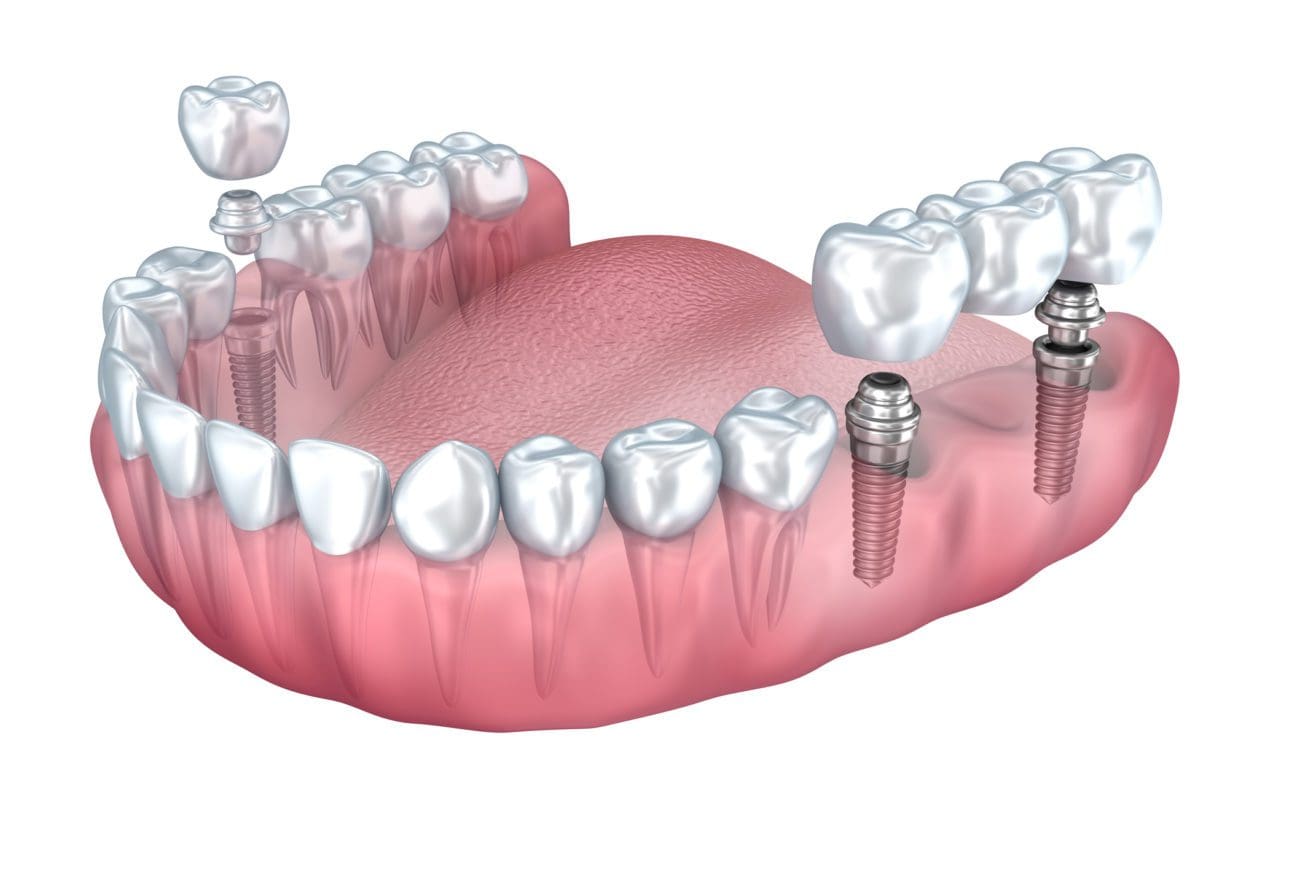An Unbiased View of Dental Sense
Table of ContentsHow Dental Sense can Save You Time, Stress, and Money.An Unbiased View of Dental SenseOur Dental Sense StatementsExamine This Report about Dental Sense
are clinical devices surgically dental implanted into the jaw to bring back an individual's ability to eat or their appearance. They offer assistance for man-made (fake) teeth, such as crowns, bridges, or dentures. When a tooth is shed as a result of injury or disease, an individual can experience complications such as quick bone loss, malfunctioning speech, or adjustments to eating patterns that result in pain.Dental dental implant systems consist of a dental implant body and dental implant joint and may also consist of a joint addiction screw. Front tooth filling. The oral implant body is surgically placed in the jawbone in place of the tooth's origin. The dental implant abutment is generally affixed to the dental implant body by the joint fixation screw and prolongs via gum tissues right into the mouth to sustain the connected synthetic teeth
Smoking might influence the recovery process and lower the long-lasting success of the dental implant. The healing process for the implant body may take a number of months or longer, during which time you generally have a short-term abutment in area of the tooth. the dental implant procedure: Thoroughly adhere to the oral health guidelines provided to you by your oral copyright.
7 Simple Techniques For Dental Sense
Implant failure can result in the demand for one more medical treatment to repair or change the dental implant system. Restores the ability to eat Recovers aesthetic appearance Helps keep the jawbone from shrinking because of bone loss Preserves the health of the bordering bone and periodontals Assists keep adjacent (neighboring) teeth steady Enhances lifestyle Damage to bordering natural teeth during dental implant placement Injury to the surrounding tissues throughout surgery, such as sinus opening Injury throughout surgical treatment (as an example, crack of bordering jawbone) Poor function, such as seeming like the teeth do not bite together normally A sensation that the tooth hangs or twisting in position resulting from an abutment screw loosening up Implant body failure (looseness of the implant body) as a result of systemic infection, which may be most likely in patients with unrestrained diabetes as a result of local infection in bone and gum tissues supporting the dental implant body as a result of delayed recovery, which may be more probable in clients that smoke Trouble cleaning up the gum tissues around the implant, leading to poor dental health Untreated periodontal illness Post-surgical pins and needles due to nerve impingement or damages Constantly inform wellness care providers and imaging technicians that you have dental implants before any type of magnetic resonance imaging (MRI) or x-ray procedures.
FDA is not familiar with any kind of adverse occasions reported for MRI or x-ray treatments with dental implants. Oral implants systems are typically made from products that comply with international agreement criteria of the International Company for Standardization (ISO) or ASTM International. These standards have details of what makes a secure material.

An oral implant is a framework that changes a missing out on tooth. With screw-like gadgets, the cosmetic surgeon inserts an implant right into the jawbone, like this and it works as an anchor for an artificial tooth, called a crown. A device called a joint links the fabricated tooth to the dental implant. The crown is personalized to fit the individual's mouth and match the color of their teeth.
Dental Sense Fundamentals Explained
Some people are not qualified for dental implant surgical procedure. It is for dental surgeons to operate on individuals with: severe illnessuncontrollable metabolic diseasebone or soft tissue disease or infectionIf these issues are resolved, an individual can have the surgery. In, dental specialists avoid running on people with: If people with any of the above undergo oral implant surgical procedure, there is a higher risk of the implant falling short.

Oral implant surgery is a tailored procedure. Give you time to recover. Attach the message and final crown, bridge or denture.
Next off, your specialist will very carefully put the dental implant into your jaw. If your implant is near the front of your mouth, your dentist will certainly make a momentary tooth for you to wear up until you recover.
Everything about Dental Sense
During the recovery stage, your jawbone needs to fuse to the oral implant. This procedure can take anywhere from three to nine months.
When your implant heals, your dental professional can affix the joint (tiny connector blog post) and your final restoration (crown, bridge or denture). This generally takes regarding one hour to finish and might call for a 2nd small surgical treatment. You should not really feel any type of discomfort during your oral implant treatment because your supplier will make use of medication to numb your gum tissues.
Comments on “The Only Guide to Dental Sense”